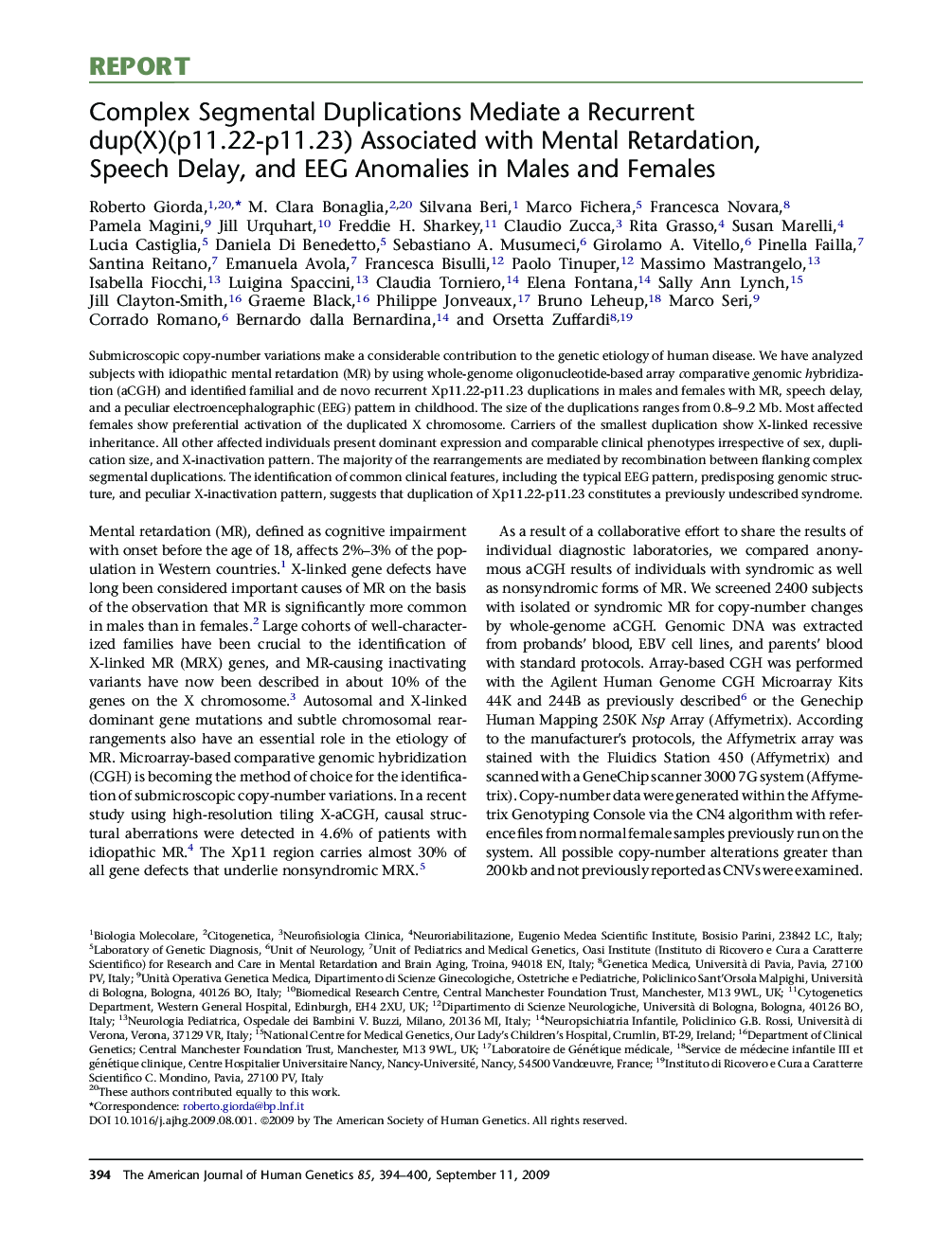| Article ID | Journal | Published Year | Pages | File Type |
|---|---|---|---|---|
| 2811935 | The American Journal of Human Genetics | 2009 | 7 Pages |
Submicroscopic copy-number variations make a considerable contribution to the genetic etiology of human disease. We have analyzed subjects with idiopathic mental retardation (MR) by using whole-genome oligonucleotide-based array comparative genomic hybridization (aCGH) and identified familial and de novo recurrent Xp11.22-p11.23 duplications in males and females with MR, speech delay, and a peculiar electroencephalographic (EEG) pattern in childhood. The size of the duplications ranges from 0.8–9.2 Mb. Most affected females show preferential activation of the duplicated X chromosome. Carriers of the smallest duplication show X-linked recessive inheritance. All other affected individuals present dominant expression and comparable clinical phenotypes irrespective of sex, duplication size, and X-inactivation pattern. The majority of the rearrangements are mediated by recombination between flanking complex segmental duplications. The identification of common clinical features, including the typical EEG pattern, predisposing genomic structure, and peculiar X-inactivation pattern, suggests that duplication of Xp11.22-p11.23 constitutes a previously undescribed syndrome.
